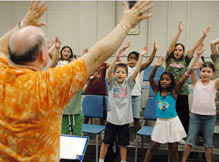By Pete DiPrimio/News-Sentinel/Fort Wayne, Ind.
Somebody stop the NCAA board of directors before they hurt somebody over text messaging regulations.
Wait a second. That’s too harsh.
Somebody stop coaches before they hurt themselves over text message excesses.
Wait. That’s harsh, too.
Text messaging isn’t the root of all college recruiting evil. It is, however, in need of regulating and common sense. The question is how much and that could be decided soon, when the NCAA board of directors meets to rule on a ban on all electronically transmitted correspondence.
At the moment, it’s an all-or-nothing dilemma, and for this we can thank going-too-far coaches and the Division I management council, which recommended the ban last week. They were influenced by the Student-Athlete Advisory Council, which represents college athletes and which complained that the number of text messages had become excessive and costly and just plain wrong.
The NCAA board of directors makes the final call. A ban would take effect starting in August.
There is plenty to debate. Some coaches, such as Notre Dame’s Mike Brey, favor a ban. Others, such as Dane Fife of Indiana-Purdue Fort Wayne, prefer keeping text messaging but with limits. Texas’ Mack Brown thinks a ban is a bad idea.
Text messaging has become almost as ingrained in our culture as spam. Almost everybody does it,
especially those under 18, who are the ones being recruited. Want to build a relationship with them? Talk to them the way friends and family do, and text messaging matters.
It’s not the only way, of course. There are phone calls, faxes, e-mails, hand-written letters and face-to-face conversations.
The NCAA, for instance, limits coaches to one phone call a week during contact periods. For now there are no limits on text messages with one exception—no contact of any kind during the July evaluation period.
Of course, any regulation or ban faces enforcement challenges.
We’ve reached this point because of coaches’ competitive zeal. You can’t keep your job if you can’t win big and you can’t win big if you don’t get the best players.
That breeds an out-work-the-other-guys mindset. If Coach A sends two text messages to a recruit, Coach B feels compelled to send three.
The result is elite recruits such as Texas guard Jai Lucas can get as many as 75 text messages a day. National recruiting analyst Dave Telep said one high-profile recruit told him he had received more than 1,300 text messages in just over two months following the 2006 Final Four.
Purdue basketball coach Matt Painter talks of the advantages text messaging provides in getting access to recruits. Indiana basketball coach Kelvin Sampson insists that most of text messaging is clean and not the horror story some make it out to be.
Sampson, of course, utilized text messages to help overcome his off-campus, no-calls-to-recruits ban (which ends in July) for NCAA phone call violations while at Oklahoma.
Sampson wound up signing a top-10 class, but credit a lot of that to his hard-working staff and the ability to get recruits to campus through elite camps and various visits.
Painter, who wound up with a top-5 class, says a good recruiter won’t overwhelm players with text messaging. The key is learning what players prefer and adjusting. That’s part of building relationships
In the end, figure text messaging will be allowed, but with limits—perhaps only on weekends, only at night, only during designated contact periods.
That’s not harsh. It’s just common sense.


























